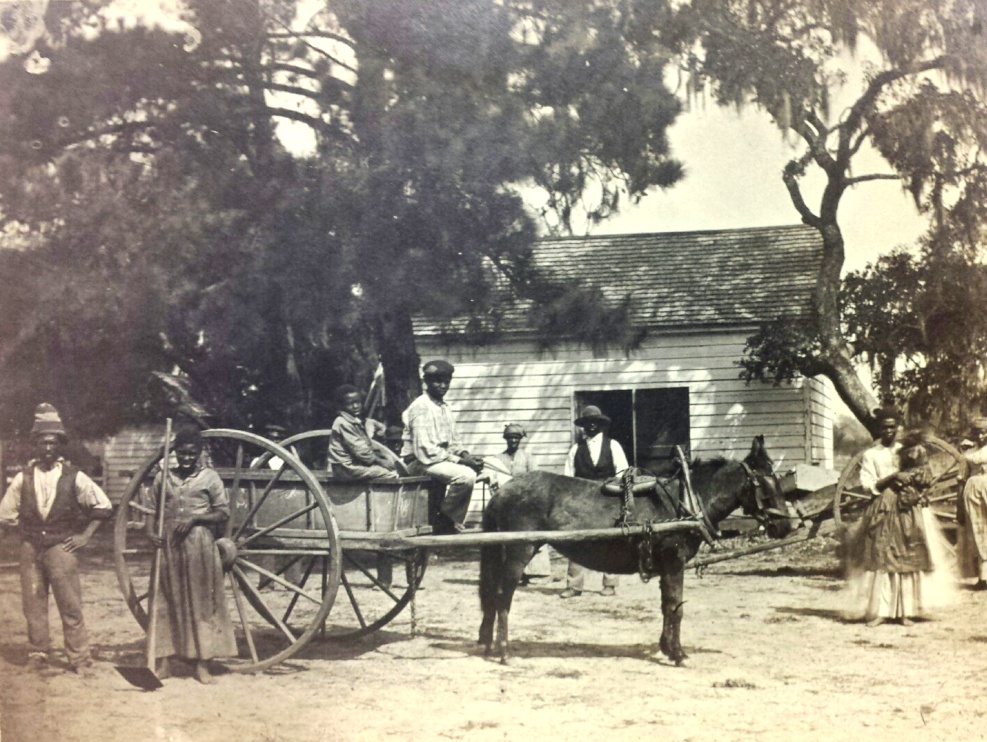
 Over the years, Edward Wilson kept The Philadelphia Photographer surprisingly focused on the interests of photographers, with limited notice of current events. The end of the Civil War was an exception and in the fall of 1865, three documentary prints appeared in quick succession. “Now our dreadful civil war is ended,” Wilson wrote, “every one is anxious to possess some relic or remembrance of it. Photography has done much to cater to these desires in the way of views of ransacked, burned and deserted cities, fields of battle, and of the dead martyrs, and portraits of the various officers of rank and merit on both sides. Views may yet be taken, such as we have described, but such a one as we present in this issue can never more be taken.”
Over the years, Edward Wilson kept The Philadelphia Photographer surprisingly focused on the interests of photographers, with limited notice of current events. The end of the Civil War was an exception and in the fall of 1865, three documentary prints appeared in quick succession. “Now our dreadful civil war is ended,” Wilson wrote, “every one is anxious to possess some relic or remembrance of it. Photography has done much to cater to these desires in the way of views of ransacked, burned and deserted cities, fields of battle, and of the dead martyrs, and portraits of the various officers of rank and merit on both sides. Views may yet be taken, such as we have described, but such a one as we present in this issue can never more be taken.”
 Between 1862 and 1863, New Hampshire photographer Henry P. Moore (1833-1911) was embedded with his state’s 3rd Regiment during their occupation of Hilton Head, South Carolina, where he made some of the earliest Civil War photographs of slave life in the Deep South. One photograph documented a group on Edisto Island, where the plantation owner abandoned fifty men and women, now left to manage the property themselves. “When [the negatives] were taken, they were slaves; now they are free men and women,” wrote Wilson. https://graphicarts.princeton.edu/2014/12/27/henry-p-moore/
Between 1862 and 1863, New Hampshire photographer Henry P. Moore (1833-1911) was embedded with his state’s 3rd Regiment during their occupation of Hilton Head, South Carolina, where he made some of the earliest Civil War photographs of slave life in the Deep South. One photograph documented a group on Edisto Island, where the plantation owner abandoned fifty men and women, now left to manage the property themselves. “When [the negatives] were taken, they were slaves; now they are free men and women,” wrote Wilson. https://graphicarts.princeton.edu/2014/12/27/henry-p-moore/
This was followed with “Burnt District of Richmond, Va.” [top] taken by Cornelius Levy (died 1865) and Leon Solis-Cohen (1840-1884), who ran a photography studio at Ninth and Filbert Streets. In the summer of 1865, the men traveled south to create the series “Views In and Around Richmond.”
A set of these prints was shown to Wilson and without hesitation, he chose one for the October issue, writing, “No pen is required to tell of the ruin and desolation reigning there. The fiery destruction which visited it in April last, left little but ruins in the principal portions of the city to tell the tale of war and woe. Main Street, especially, where once stood handsome and flourishing business palaces, banks, and public buildings, suffered to the utmost extent, and for a series of blocks, but one noble building stands erect unscathed by the flames. This is the ‘First National Bank of Virginia’ formerly the Post-office, and latterly the Confederate Treasury building. It is a handsome structure of granite, and occupies a conspicuous position in our picture – its portals still draped in mourning for our late President.”
 Then in November, Wilson published this group portrait entitled “Major-Generals Anderson and Burnside” taken by John Coates Browne (1838-1918), a wealthy amateur and founding member of the Philadelphia Photographic Society. The image would have been published earlier, Wilson told his subscribers but only one of Browne’s negatives was successful and so, it took longer to print the full edition of approximately 1,000 prints.
Then in November, Wilson published this group portrait entitled “Major-Generals Anderson and Burnside” taken by John Coates Browne (1838-1918), a wealthy amateur and founding member of the Philadelphia Photographic Society. The image would have been published earlier, Wilson told his subscribers but only one of Browne’s negatives was successful and so, it took longer to print the full edition of approximately 1,000 prints.
While Anderson and Burnside are identified, there is no identification of the other two men. If you recognize them, please let us know.
